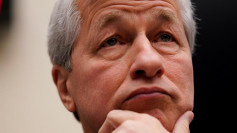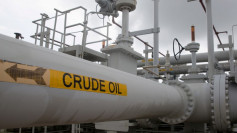Oil prices saw a modest recovery on Thursday as the market reacted to a combination of factors, including a notable decline in U.S. crude inventories and a decision by OPEC+ members to delay a planned production increase. The move comes as oil prices have been under pressure, hitting multi-month lows earlier in the week, primarily due to persistent concerns about global demand.
The American Petroleum Institute (API) reported that U.S. crude oil inventories fell by a significant 7.431 million barrels last week, far exceeding analysts' expectations of a 1 million barrel draw. This sharp decline in U.S. stockpiles provided a brief reprieve for oil prices, which had been sliding due to fears of a slowing economy.
John Evans, an analyst at PVM, noted that the API report offered a "pause of breath and light reprieve for oil prices." The market responded positively, with Brent crude for November delivery rising by 66 cents, or 0.9%, to $73.36 per barrel by midday GMT on Thursday. Similarly, U.S. West Texas Intermediate (WTI) crude for October delivery was up 64 cents, or 0.9%, to $69.84 per barrel.
Adding to the market's support was the news that the Organization of the Petroleum Exporting Countries (OPEC) and its allies, collectively known as OPEC+, are considering postponing a scheduled production increase. According to sources familiar with the discussions, the group is contemplating delaying the output hike, originally set to begin in October, by two months. This potential delay is seen as an effort to avoid further exacerbating the current oversupply in the market, which could drive prices even lower.
OPEC+ had previously planned to increase production by 180,000 barrels per day (bpd) in October, as part of a broader strategy to gradually unwind the 2.2 million bpd in voluntary cuts implemented by several key members, including Saudi Arabia, Russia, and the United Arab Emirates. These cuts, which were introduced to stabilize prices during a period of low demand, were set to expire at the end of this month.
However, the ongoing weakness in global demand, particularly from China, the world's second-largest economy and top crude importer, has complicated the group's efforts to manage supply. China's sluggish recovery from the economic downturn induced by the COVID-19 pandemic has kept a lid on oil demand, contributing to the overall bearish sentiment in the market.
HSBC analysts warned that any decision by OPEC+ to delay the production increase might be interpreted by the market as a belated acknowledgment that global oil demand remains weak. "Raising production would tip the market into a meaningful surplus from Q1 2025 onwards," the bank noted in a report. "On the other hand, holding off may be interpreted as a belated admission by OPEC that oil demand is weak."
Compounding the supply-side challenges are reports of production overages by certain OPEC+ members, such as Iraq and Kazakhstan, who have consistently exceeded their monthly quotas. These countries have submitted plans to reduce their output by September 2025 to compensate for their previous excesses. Meanwhile, ongoing political instability in Libya has added further uncertainty to the supply landscape, as the North African nation struggles to maintain its production levels amid internal conflict.





